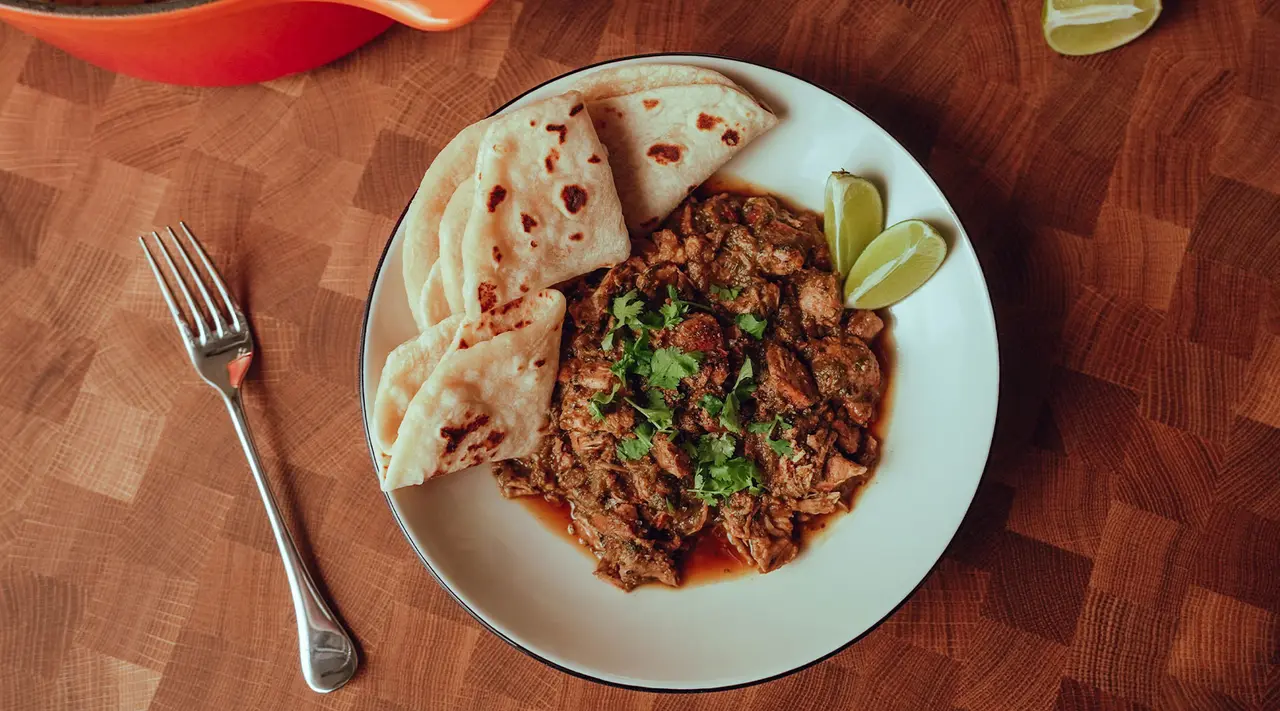Beef stews like boeuf bourguignon and goulash will never go out of style. And, because it often takes upwards of an hour for tougher, collagen-rich cuts like chuck or brisket— those traditionally used for stew—to collapse into tender, savory perfection, stews are ideal for freezing-cold winters. But cooking all that beef requires a lot of liquid, and sometimes you’ve got a bit too much left over — meaning you’ll probably want to thicken it up a bit before serving.
Why Should You Thicken Stew?
Whether the stew you’re making is French- or American-style, you’re almost definitely going to be submerging your meat and vegetables in some kind of liquid. Julia Child’s iconic boeuf bourguignon, from her book Mastering the Art of French Cooking, for example, calls for around six cups of liquid, roughly equal parts of red wine and beef stock.
Stews like boeuf bourguignon should ideally be thick and glossy enough that the liquid coats the back of a spoon, a process aided by collagen-rich cuts of meat and a long, slow simmer. Sometimes, however, you need a little bit of a boost to get you there: this is where the thickening part comes in.
Five Thickening Agents for Stew
Here are a few options for turning your watery stew into something sublime. Depending on how you like your stew, one of these methods may work better, but they are all excellent techniques to try out.
1. Make a RouxRoux is a classic French technique that consists of cooking equal parts flour and fat (usually butter) over a low flame until smooth. While making a basic roux takes a little bit of practice to nail down, it’s worth the effort: roux makes for an excellent thickening agent because of how smoothly it can be incorporated into a stew or soup.
While some stews start with making a roux, such as gumbo, roux can also be whisked in towards the end of the cooking process to make a rich, thick gravy that’s perfect for ladling over noodles or polenta.
2. Incorporate a PuréeAnother option for thickening your stew is to incorporate a purée. This method is pretty straightforward: towards the end of cooking, ladle out a portion of the stew, including both liquid and vegetables (leave out the meat), and purée it in a blender before adding it back to the pot. This gives your stew a creamier body, particular if you’re using starchy vegetables like potatoes.
3. Add a StarchStarches are an excellent way to thicken up your stew, as individual starch molecules start to absorb water immediately upon hitting hot liquid, eventually bursting and causing the liquid to thicken. One common way to add starch to a dish like beef stew is by adding uncooked potatoes or rice part way through cooking, allowing them to fully cook in the stew. This has the added benefit of turning your stew into a complete meal in itself.
4. Create a SlurryAnother common method of incorporating starch into a stew is by creating a slurry from equal parts starch, such as cornstarch or arrowroot, and cold water. You might even pull from Mexican cuisine and use masa harina, ground nixtamalized corn, which is often used to thicken beef chili: this will impart a slight nutty flavor, a bit like a corn tortilla.
Much like adding potatoes or rice, once you add your slurry, the starch molecules will immediately start to soak up liquid and dissolve, producing a richer texture. Important: only add your slurry once the stew is almost finished cooking, as cooking it for too long will cause the mixture to thin out again.
5. Whip Up a Beurre ManiéA bit like an uncooked roux, beurre manié is aFrench method of adding a paste made of butter and flour to a soup or stew right before serving. Simply knead equal parts softened butter and flour together in a bowl with your fingers until well-combined (beurre manié literally means “kneaded butter”) and then roll into small bits. Add the bits gradually to your stew, whisking until it noticeably thickens.
Ready to Cook?
Now that you’re an expert in thickening stew, you’re probably ready to dive head-first into a bubbling pot of meat and veggies. First, however, you’ll need the right pot to start out with: Made In’s Enameled Cast Iron Dutch Oven is a super durable, versatile piece and the ideal vessel for a hearty, slow-cooked stew. Make sure to scrape up all that precious fond for even more amped-up beefy flavor.






























